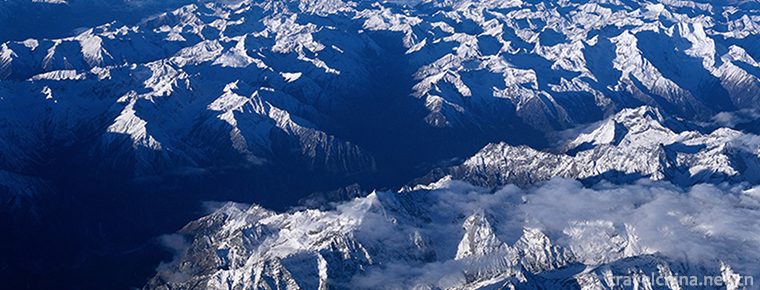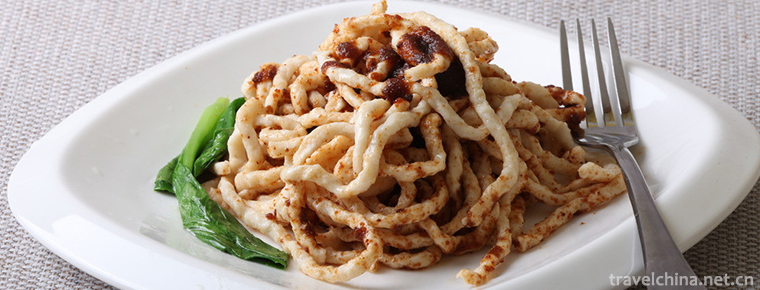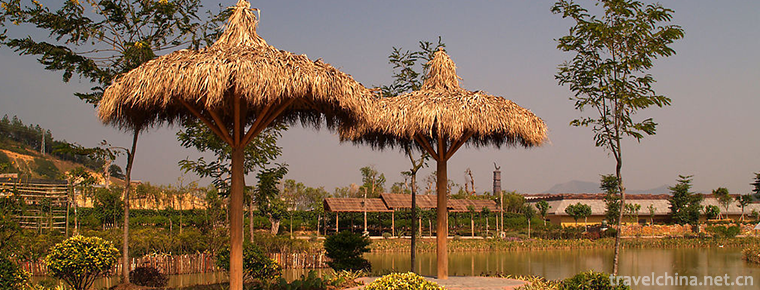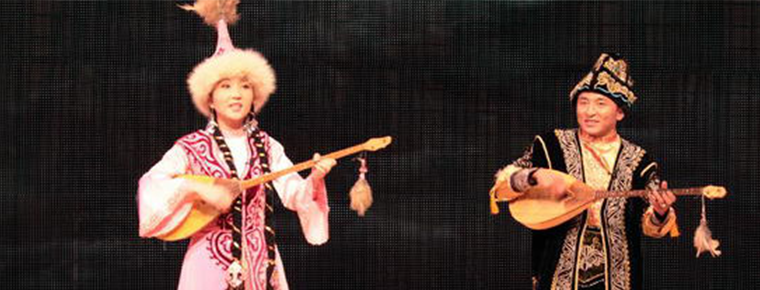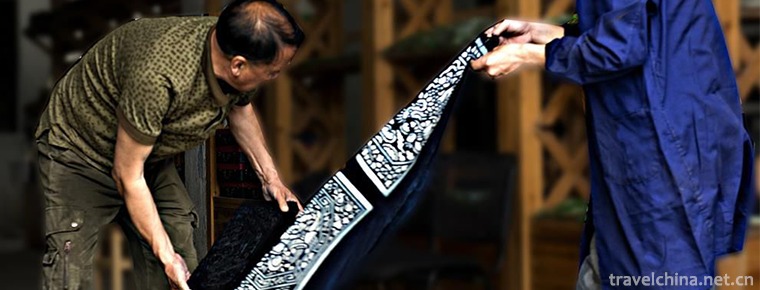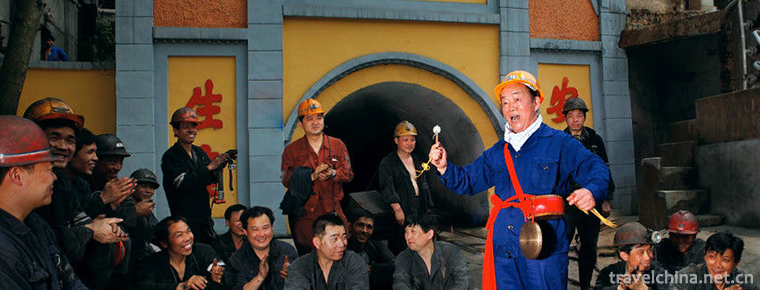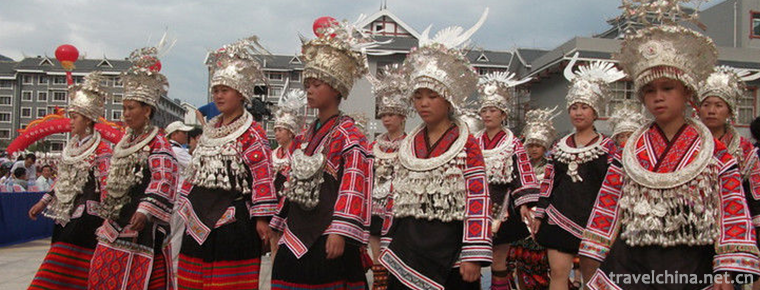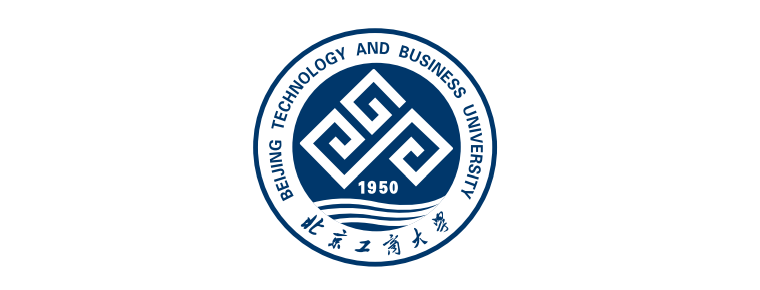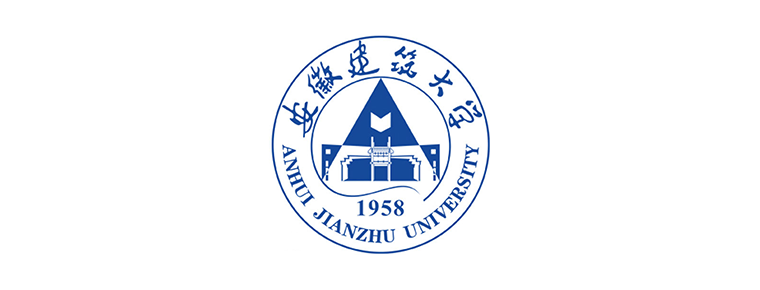Mongolian Costume
Mongolian Costume
Mongolian costumes, also known as Mongolian robes, mainly include gowns, belts, boots, jewelry and so on. However, there are differences in styles due to different regions. Mongolian costume has a strong grassland style, mainly gown, easy to ride pommel horse. Because the Mongolian people have lived in the Saibei grassland for a long time, the Mongolian people love to wear long gowns, both men and women. Pastoral winter clothes are mostly light board leather clothes, as well as silk and cotton clothes. Summer clothes are multi-fabrics. The long gown has a large body and long sleeves. It is red, yellow and dark blue. Both men and women do not open the hem of their robes. Red and green satin for belt.
In November 2014, "Mongolian costume" was approved by the State Council and listed in the fourth batch of National Intangible Cultural Heritage Representative projects.
historical origin
The origin of Mongolian costumes can be traced back to the remote prehistoric period. In the Paleolithic era, people began to decorate themselves with the leaves of plants, and later made clothes from hunting hides. In the rock paintings of the northern nomadic peoples, it has been seen that ancient humans in the Mongolian Plateau were surrounded by a short skirt with long feathers on their heads and tails on their hips. Moreover, there are a large number of rough stone rings, bone ornaments and other items, which shows that the northern nomadic people had aesthetic intention and pursuit long ago.
According to archaeological data, Mongolian costumes are closely related to the costumes of the nomadic people in northern China in ancient times. According to the biography of Hun in Han Shu, the headdresses of Hun women who eat animal meat and wear fur are very similar to those of Chahar women. The dress culture of Hun was passed on to the northern nomads such as Xianbei, Rouran and Turk, and of course to the Mongolian people. And one of the common characteristics of these ethnic costumes is to adapt to the plateau climate.
Mongolian costumes have their own aesthetic characteristics. Mongolian people especially prefer bright and bright colors. These colors make people feel bright in tone and happy in body and mind. Mongolian people also advocate white, sky blue and other pure, bright colors. Blue sky and white clouds, green grass and red clothes, a natural harmony. In addition, from the style of Mongolian costumes, the complimentary clothes and bands can not only reflect the curvilinear beauty of the human body, but also reflect the generous and rough nature of Mongolian herdsmen.
The Mongolian people live in the Mongolian Plateau, and the climate is cold and nomadic, so their clothes must have a strong cold-proof effect and be easy to ride. The gowns, shoulders, leather caps and boots naturally become their preferred clothes. "Black Tartar Story" contains: "its clothing right jacket, Taoist collar, a small number of side collar, with felt, leather, silk production, clothing fat, long mopping, winter clothing two fur, one fur inward, one fur outward, men and women similar style." This kind of dress style, after a slight reform, has been used up to now, both men and women in pastoral areas wear it. There are 3 kinds of split, cotton and leather. In winter, sheep's fur is used as lining, and silk, satin and cloth are used as surface, while in summer, cloth, silk, satin, silk and other materials are used. Red, yellow, purple and dark blue are commonly used. Sleeve length is narrow, hem can not be forked, skirt and hem are mostly edged with velvet, edge width is about 6-9 cm. When wearing, slightly upward, with red and purple silk ribbons tied around the waist, hanging at both ends of the waist.
Mongolian costume is an integral part of Mongolian traditional culture. From ancient times to the Khanate of Mongolia, from the yuan, Ming and Qing Dynasties, with the development of history, the Mongolia people in the past dynasties have played their ingenuity and wisdom in the long life and production practice, and constantly absorbed the essence of the brotherhood of the brotherhood. They have gradually improved and enriched their traditional costumes, styles, fabrics, and sewing techniques, and created many beautiful costumes. It adds brilliant brilliance to the costume culture of the Chinese nation.
Clothing category
Mongolian costumes are called Mongolian gowns, which mainly include gowns, belts, boots, jewelry and so on. However, there are differences in styles due to different regions.
Men wear knives, sickles, snuff boxes and other accessories on their belts. He likes to wear soft leather boots to his knees. Farmers wear more clothes, such as long gowns and cotton clothes. They wear more felt boots in winter and less high boots. Men often wear blue, black and brown hats, and some people wrap their heads in silk. Women often use red and blue headdresses to wrap their heads around, and they wear conical caps like men in winter. The unmarried woman separates her hair from the front and puts two roots on it. The roots are covered with two big beads, and the hair is slightly drooping. The hair is decorated with agate, coral and jasper. What is more distinctive is Mongolian wrestling clothes.
Inner Mongolia has a vast territory, different natural environment, economic conditions and living habits, forming a variety of unique and colorful clothing. For example, there are dozens of costumes, such as Balhu, Buliat, Horqin, Uzhumuqin, Sunite, Chahar, Ordos, Ulat, Turyite and Heshuote. They have the same general style and different characteristics. The basic shape of the gown is a long gown, the hem is open on both sides or in the middle, and the sleeve ends are horseshoe sleeves. Married women's gowns are also equipped with long and short shoulders of different styles.
The biggest difference among Mongolian tribal costumes is women's headwear. For example, the headdress of Mongolian women in Baerhu tribe is Panyang horn, the headdress of Mongolian women in Horqin tribe is hairpin combination, and the headdress of Mongolian people in Heshuote tribe is simple and simple double-pearl set. The most prominent feature of the headdress of Mongolian women in Ordos tribe is the big hair stick on both sides and the chain drop with gemstone beads such as agate and jadeite, which makes the headdress of Ordos one of the Mongolian tribes. The best.
robe
Taking women's gowns as an example, the Mongolians in Horqin and Karaqin areas are influenced by the Manchu nationality, wearing long gowns with wide straight barrels to heels, with split ends on both sides, and laced collars and cuffs in various colors; the Mongolians in Xilingol grassland wear Mongolian gowns with large, narrow sleeves without split edges; the women in Briat wear shoulder-length gowns with waist skirts; the women's gowns in Ordos are divided into three parts, the first part. One is a body-fitting garment with sleeves as long as wrists, the second is a jacket with sleeves as long as elbows, the third is a collarless shoulder-to-shoulder with straight-row flash buttons, while Mongolians in Qinghai wear long gowns similar to Tibetan robes.
Apart from Qinghai, men's clothing varies little from place to place. Spring and autumn wear jackets, summer wear single robes, winter wear cotton or leather robes. Mongolian people usually like to wear cloth clothes. They usually wear silk and satin clothes with brocade lace on holidays or festivals. Men's clothes are mostly blue and brown. Women's clothes like to use red, pink, green and sky blue. Mongolian men wear long gowns and waistbands, women's sleeves embroidered with lace patterns, coats with high collars, similar to the Han nationality. Women like to wear three clothes of different lengths. The first one is body-fitting clothes with sleeves as long as wrists, the second one is coat with sleeves as long as elbows, the third one is collarless and shoulder-to-shoulder, with straight shining buttons, which is particularly striking.
belt
Belt is an important part of Mongolian costume. It is made of three or four meters long silk or cotton cloth. Men wear knives, sickles, snuff boxes and other accessories on their belts.
Mongolian boots
Mongolian boots are divided into leather boots and cloth boots. Mongolian boots are exquisite in workmanship, and there are exquisite patterns in boot uppers. According to the change of season, there are several kinds of leather boots, cloth boots and felt boots. Leather boots are made of cowhide, horsehide and sheepskin. They are durable, waterproof and cold-resistant. Their styles include tips rolled up, half rolled, flat bottom not rolled up, tips and round heads. Cloth boots are mostly made of silk and velvet fabrics. Most of them are medium and short hairpins. Boot embroidery is designed with patterns. They are light, soft, comfortable and beautiful. The felt boots are mostly rolled with wool and camel hair to keep warm and wear-resistant. They are usually worn in the middle of winter. Mongolian boots are divided into high, medium and low ones according to their height. Leather boots usually use special techniques to roll and paste the required patterns, such as Erlong Opera Pearls, Jewelry Liancheng, Bats, Moire, Wrinkle, Grass, Wanzi, Butterflies, Flowers and other patterns on the boots or boots. Most of the uppers and hammers of cloth boots are embroidered or pasted with exquisite patterns. At present, there are seven or eight kinds of Mongolian boots popular among the people, including military boots (big plate tip), grasping tigers, soap-like boots (egg head), martial footballers (chasing boots), big immortal boots, three-hugged boots (small plate tip), eight-treasure boots (children's boots), Leather Horse Boots (high hammer, half hammer), embroidered cloth boots (half hammer).
jewelry
Wearing jewelry and hat is a Mongolian custom. Hats in different regions also have local characteristics. Mongolian caps in Inner Mongolia and Qinghai have high sides and flat tops. The linings are made of white felt. The outside of the hat is decorated with leather or dyed purple-green. It is thick in winter and thin in summer. The top of the hat is decorated with reels and the ribbon is made of silk, which can be worn by both men and women. Baltic tiger and Buryat Mongolia in Hulunbuir, men wear shawl caps, while women wear top caps with overturning eaves. The Mongolian jewelry is rich and luxurious with precious raw materials such as agate, jadeite, coral, pearl and silver.
Protection and inheritance
In 2004, Mongolian costumes were included in the pilot project of national national protection project, and in 2008, they were included in the list of intangible cultural heritage projects at the national level in China. In April 2009, the local government of Inner Mongolia led the rescue and protection project of Mongolian costumes. The survey was conducted in more than 50 banners and counties in Inner Mongolia. More than 600 local experts and herdsmen were interviewed. After more than four years of investigation, the basic patterns of traditional costumes of 28 Mongolian tribes were finally determined. 108 sets of costumes and 34 sets of headwear of 28 Mongolian tribes in Inner Mongolia were manufactured, and all of them were handed over to Inner Mongolia Museum as permanent collections for display and research.
Lan Ying, president of the Inner Mongolia Autonomous Region Standardization Institute, introduced that the first national traditional costume local standard "Mongolian costume" was officially implemented on August 1, 2012. This article contains 28 tribal costumes (including headdresses, hats, robes, shoulders, accessories, boots, etc.) and classifies the local standards of Mongolian costumes series. It applies standardization technology to the protection, inheritance and development of intangible cultural heritage, accurately and truly preserves the basic elements of traditional Mongolian costumes, and extracts Mongolian costumes. The basic elements of decorative culture are organically combined with modern aesthetic needs, production and living needs and technology to form technical norms, which become the criteria and basis of Mongolian costume production, circulation and use. The 56 sets of Mongolian costume standard samples included in the standard all have color effect, style and tailoring drawings, which are issued in Mongolian and Chinese versions. The 28 Mongolian tribes are: Balhu, Briat, Erlut, Zalaite, Horqin, Zalut, Naiman, Arukhorqin, Aohan, Bahrain, Onniut, Karachin, Keshkerten, Uzhumuqin, Hozit, Abaga, Chahar, Sunite, Sizi, Tumot, Dalkhan, Maomingan, Ordos, Ulat, Ala. Good Islamic Mongols, Kalkha and Turhut.
Mongolian costumes, with their unique style and exquisite production technology, stand in the forest of costumes in China and even in the world for a long time. Sqingbalamu has manually sewn thousands of sets of Ordos clothes and more than 40 pieces of Ordos women's headwear, and has made remarkable achievements. It has been unanimously affirmed by the masses and the "non-heritage" research departments at all levels, and has become a representative inheritor of the four levels of banner, city, autonomous region and country.
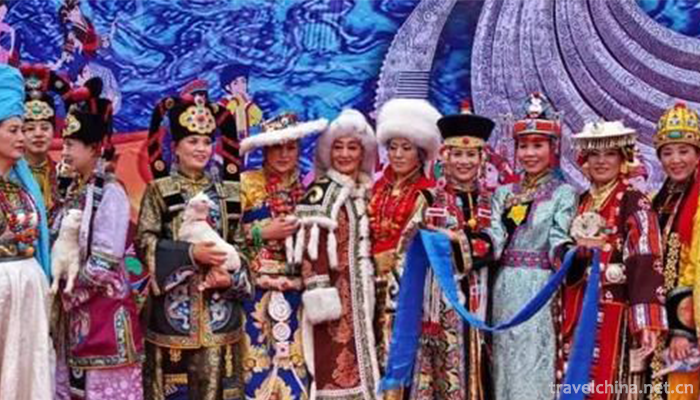
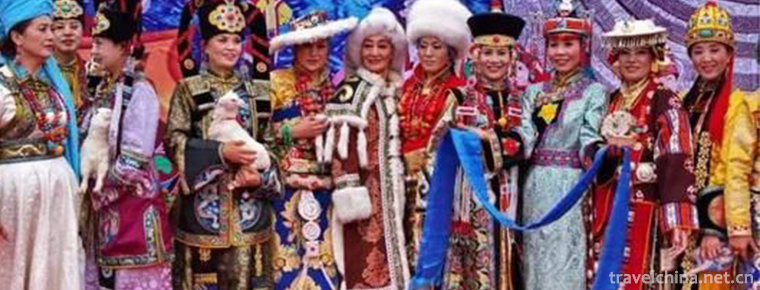
Mongolian Costume
-
QomolangmaEverest
Mount Qomolangma (Mount Qomolangma) is the main peak of the Himalayas and the highest mountain in the world. It is located on the border between China and Nepal. The peak is located in China
Views: 309 Time 2018-10-30 -
sate noodles
The only disciple chef Wang Daquan who teaches Shacha Noodle recipe by the master of Southern Fujian cuisine Yang Jibo inherits the tradition and makes it flourish. The main ingredients of Shacha sauc
Views: 201 Time 2018-11-02 -
Senbora Resort Forest Scenic Area
Senbora, a landscape world in ancient forests, a paradise of pleasure water under glacial ruins, a national 4A-class tourist attraction, is located at the exit of Fogang Expressway in Fogang County
Views: 207 Time 2019-02-07 -
bir bala
Kazakh is a music-loving nation, known as "horses and songs are the wings of Kazakhstan". Folk songs play a very important role in Kazakh music. Where there is a felt room of Kazakh people,
Views: 130 Time 2019-05-02 -
Blue Clip Valerian Skills
Blue clip valerian technology, the local traditional printing and dyeing technology of Wenzhou City, Zhejiang Province, is one of the national intangible cultural heritage.
Views: 337 Time 2019-05-11 -
Pingxiang spring Gong
Pingxiang Spring Gong is a traditional form of music evolved from Primula in Pingxiang, Jiangxi Province. It is widely spread in Pingxiang City and its surrounding areas. It uses Pingxiang dialect and
Views: 165 Time 2019-06-09 -
Yangasha
Yangasha, an epic originating in Jianhe, Guizhou Province, is eulogized for Miao compatriots from generation to generation. It is a sad and elegant love story about a passionate Miao girl. It is the G
Views: 206 Time 2019-07-11 -
Beijing Technology and Business University
Beijing University of Industry and Commerce is a multi-disciplinary university in Beijing. It was approved by the Ministry of Education in June 1999 by the merger of Beijing Institute of Light Industr
Views: 418 Time 2019-09-06 -
Anhui Jianzhu University
Anhui Architecture University is a multi-disciplinary university characterized by the discipline of civil engineering. It is Anhui province. Ministry of housing and urban rural development To build th
Views: 170 Time 2019-10-10 -
Dragon elbow mountain
Longcub mountain, also known as yuxu mountain, is located in Longquan Township, northwest of Huili County, Liangshan Yi Autonomous Prefecture, Sichuan Province, China. It is also known as yuxu mountain at the junction of Baiguowan
Views: 359 Time 2020-10-16 -
The changing style of Cheongsam
After a hundred years of evolution, with the change of people's life style and aesthetic taste, cheongsam has developed a variety of styles, which makes people dazzled. In the golden age of the development of Cheongsam in the 1930s and 1940s, the styles of cheongsam changed
Views: 334 Time 2020-12-11 -
Animal resources in Meishan
There are many species of wild animals in Meishan City, and the floristic composition is more complex, mainly subtropical forest animals. There are 469 species of terrestrial wild (vertebrate) animals, including 91 species of mammals, 18 orders, 27 families, 65 genera,
Views: 344 Time 2020-12-18
